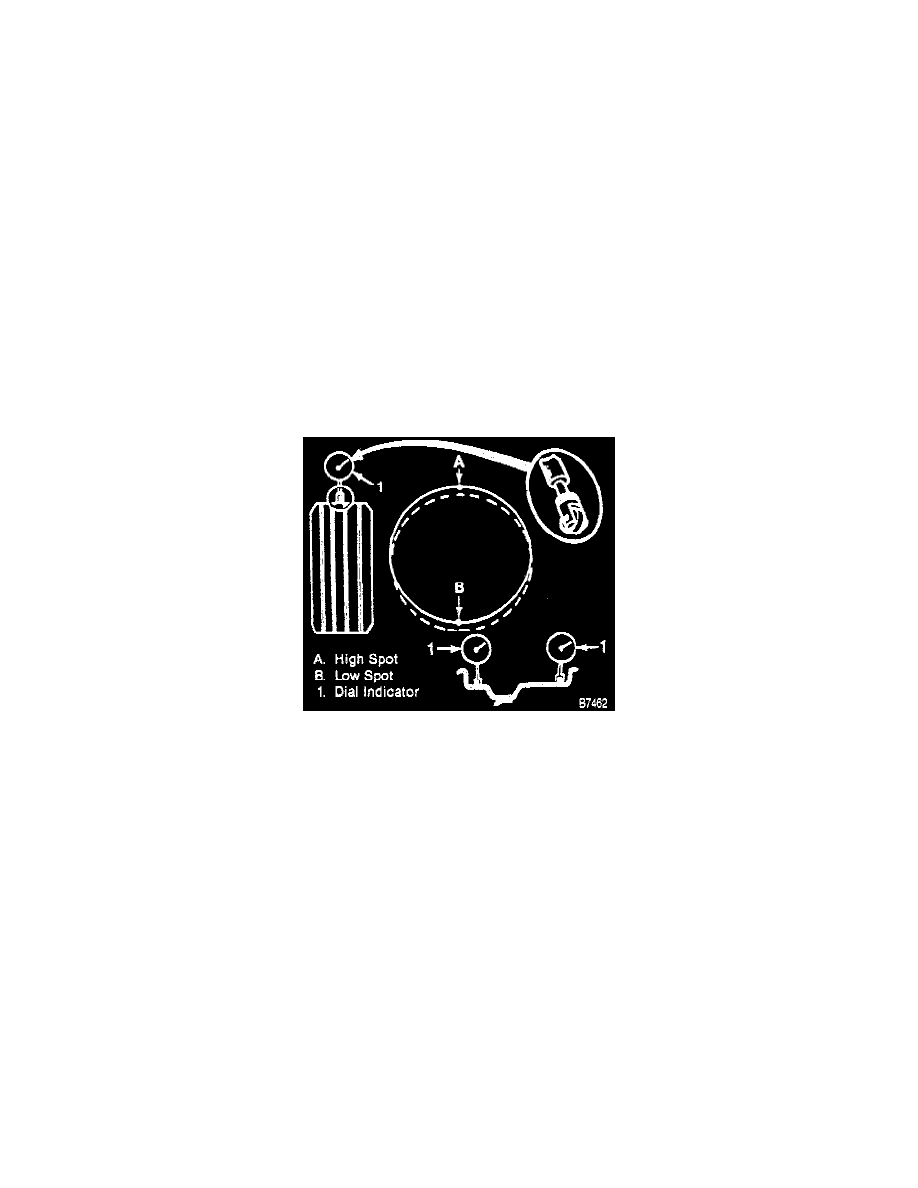S10/T10 P/U 2WD V6-4.3L VIN W (1997)

Important Replacement wheels must be equivalent to the original equipment wheels in load capacity, diameter, rim width, offset, and mounting
configuration.
A wheel of incorrect size or type may affect wheel and hub bearing life, brake cooling, speedometer/odometer calibration, vehicle ground
clearance, and tire clearance to the body and chassis.
Steel wheels can be identified by a two or three letter code stamped into the rim near the valve stem. Aluminum wheels have the code, part
number, and manufacturer ID cast into their back side.
NOTICE: The use of aftermarket reverse-type wheels, designed to extend the wheel away from the body, will increase the scrub radius. An
increased scrub radius may greatly increase steering effort and reduce hub bearing life.
Procedure Description
Wheel runout should be measured with an accurate dial indicator. Measurements may be taken with the wheel installed on or off the vehicle using an
accurate mounting surface such as on a wheel balancer. Measurements may also be taken with or without the tire mounted on the wheel.
Radial runout and lateral runout should be measured on both the inboard and outboard rim flanges. With the dial indicator firmly in position, slowly
rotate the wheel one revolution and record the total indicator reading. If any measurement exceeds specifications, and there is vibration that wheel
balancing will not correct, the wheel should be replaced. Disregard any indicator readings due to welds, paint runs, scratches, etc.
Radial Runout
Radial runout is the egg-shaped difference from a perfect circle. Measure tire radial runout from the center tire tread rib although other tread ribs can be
measured as well. The total runout is the reading from the gauge, and the high spot is the location of the maximum runout. On a rim, if either flange is
beyond specifications, replace the rim.
-
Aluminum Wheels - 0.762 mm (0.030 inch)
-
Steel Wheels--1.015 mm (0.040 inch)
Lateral Runout
